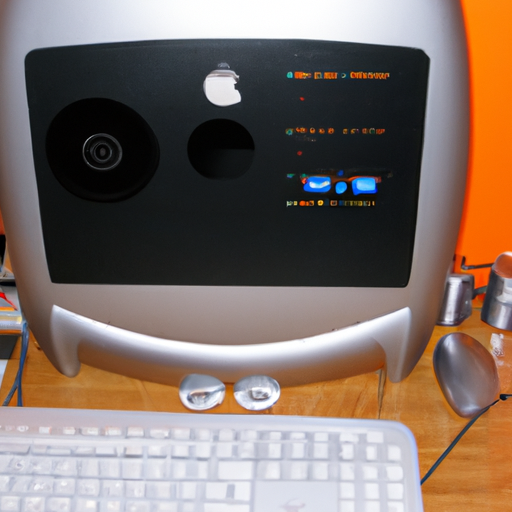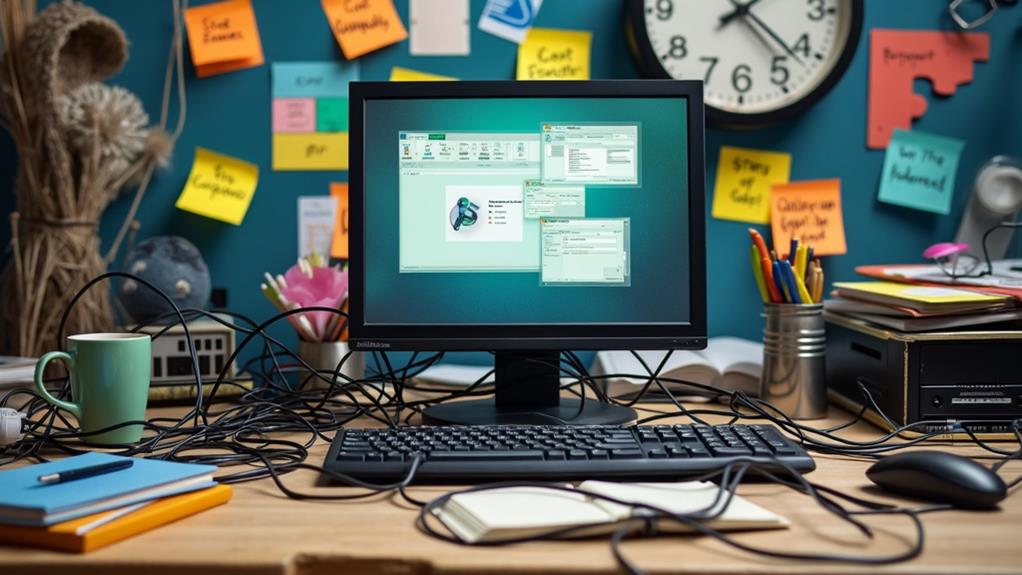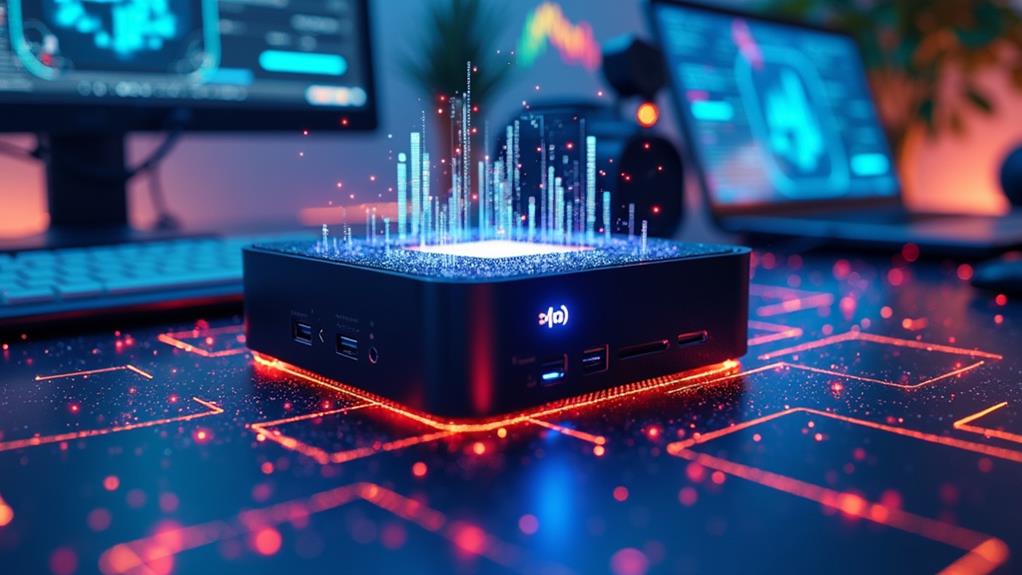



Have you ever wondered what peripherals you can use with a mini PC? Mini PCs are becoming increasingly popular due to their compact size and versatility. In this article, we will explore the various peripherals that are compatible with these tiny powerhouses. From keyboards and mice to monitors and speakers, we will cover all the essentials to help you make the most out of your mini PC experience. So, whether you’re a tech enthusiast or just looking to optimize your workspace, keep reading to find out about the different peripherals that can enhance your mini PC setup.
Understanding Mini PCs
What is a Mini PC?
A Mini PC, also known as a compact PC, is a small-sized computer that offers the same functionality as a traditional desktop computer. It is designed to be portable, space-saving, and energy-efficient. Despite its small form factor, a Mini PC can perform a wide range of tasks, including web browsing, office work, media streaming, and even light gaming. It usually consists of a small case that houses the motherboard, processor, memory, storage, and other essential components.
Why use a Mini PC?
There are several reasons why using a Mini PC can be advantageous. Firstly, its small size makes it ideal for those with limited space. Whether you live in a small apartment, dorm room, or office cubicle, a Mini PC can fit seamlessly into your environment. Additionally, Mini PCs are highly portable, allowing you to easily take your computer wherever you go. This makes them perfect for frequent travelers or individuals who work remotely. Furthermore, Mini PCs are energy-efficient, consuming less power compared to traditional desktop computers. This not only helps reduce electricity costs but also contributes to a greener environment. Lastly, Mini PCs are generally more affordable than full-sized desktop computers, making them a cost-effective choice for individuals on a budget.
Features of Mini PCs
While the specific features of Mini PCs may vary depending on the model, there are some common characteristics that make them unique. Most Mini PCs are equipped with modern processors, offering sufficient power to handle everyday computing tasks. They also come with a decent amount of RAM, ensuring smooth multitasking and application performance. In terms of storage, Mini PCs usually offer various options, including solid-state drives (SSDs) and hard disk drives (HDDs), allowing users to choose based on their storage needs. Another notable feature of Mini PCs is their connectivity options. They typically come with multiple USB ports, HDMI or DisplayPort for connecting to external displays, and audio jacks for headphones or speakers. Finally, Mini PCs often have integrated Wi-Fi and Ethernet capabilities, enabling seamless internet connectivity.
Overview of Peripherals for Mini PCs
Definition of Peripherals
In the context of Mini PCs, peripherals refer to additional devices that can be connected to enhance the functionality of the computer. These devices expand the capabilities of the Mini PC, allowing users to perform a wider range of tasks and achieve a more personalized computing experience. Peripherals can be broadly categorized into input peripherals, output peripherals, storage peripherals, and networking peripherals.
How Peripherals enhance functionality of Mini PCs
Peripherals play a crucial role in enhancing the functionality of Mini PCs. They provide users with additional input and output options, expand storage capacity, and enable seamless networking capabilities. By connecting peripherals to a Mini PC, users can customize their computing experience according to their needs and preferences. These devices offer greater flexibility, convenience, and versatility, transforming the Mini PC into a powerful tool for productivity, entertainment, and creativity.
Types of Peripherals You Can Use With a Mini PC
Input Peripherals
Input peripherals are devices that allow users to provide input to the Mini PC. These devices include keyboards, mice, game controllers, webcams, and more.
Output Peripherals
Output peripherals are devices that enable users to receive output from the Mini PC. Examples of output peripherals include monitors, printers, and speakers.
Storage Peripherals
Storage peripherals are devices that enhance the storage capacity of the Mini PC. USB flash drives, external hard drives, and memory cards are common examples of storage peripherals.
Networking Peripherals
Networking peripherals are devices that facilitate network connectivity. Wi-Fi adapters and Ethernet cables are popular networking peripherals used with Mini PCs.
Input Peripherals for Mini PCs
Using a Keyboard with a Mini PC
Using a keyboard with a Mini PC provides a familiar and efficient input method. There are various types of keyboards available, including wired and wireless options. Compact keyboards or those with built-in touchpads can be particularly beneficial for Mini PC setups with limited space.
Using a Mouse with a Mini PC
A mouse is an essential input peripheral for Mini PCs, offering precise and intuitive control. Wireless mice are popular choices as they eliminate clutter and allow for increased flexibility in positioning. Optical or laser sensors ensure smooth tracking on various surfaces.
Using a Game controller with a Mini PC
For gaming enthusiasts, using a game controller with a Mini PC can significantly enhance the gaming experience. Whether it’s a wired or wireless controller, Mini PCs can easily connect to popular game controllers, enabling seamless gameplay.
Using a Webcam with a Mini PC
Webcams are valuable input peripherals for Mini PCs, especially for video conferencing, live streaming, or content creation purposes. High-definition webcams provide clear video quality, while built-in microphones allow for seamless communication.
Output Peripherals for Mini PCs
Using Monitors with Mini PCs
Connecting a monitor to a Mini PC expands the display capabilities, allowing for multi-tasking, content creation, and immersive entertainment. Mini PCs typically support various display outputs, such as HDMI or DisplayPort, enabling seamless connectivity with a wide range of monitors.
Using Printers with Mini PCs
Printers are essential output peripherals for Mini PCs, enabling the physical reproduction of documents, photos, and other materials. Mini PCs can connect to printers via USB or wirelessly, offering convenient printing options.
Using Speakers with Mini PCs
To enhance the audio output of a Mini PC, connecting speakers is a popular choice. Whether it’s desktop speakers or a home theater system, Mini PCs can deliver high-quality audio for gaming, movies, music, and more.
Storage Peripherals for Mini PCs
USB Flash Drives and Mini PCs
USB flash drives are versatile storage peripherals that can be easily plugged into Mini PCs. They provide portable storage options for transferring files, backing up data, or expanding the storage capacity of the Mini PC.
External Hard Drives and Mini PCs
External hard drives offer larger storage capacities compared to USB flash drives, making them ideal for storing large files, media libraries, or backup data. Mini PCs can connect to external hard drives via USB or other compatible interfaces.
Memory Cards and Mini PCs
Mini PCs often come equipped with memory card slots, providing a convenient way to expand storage or transfer data. Memory cards, such as SD cards, can be used with Mini PCs for various purposes, including multimedia storage and data transfer.
Networking Peripherals for Mini PCs
Wi-Fi Adapters for Mini PCs
While most Mini PCs come with built-in Wi-Fi capabilities, using a Wi-Fi adapter can offer additional flexibility in terms of network connectivity. Wi-Fi adapters enable Mini PCs to connect to wireless networks, providing seamless internet access.
Ethernet Cables for Mini PCs
Ethernet cables are reliable networking peripherals that offer stable and fast internet connections. For Mini PCs that require a wired connection, connecting an Ethernet cable ensures consistent network performance.
Compatibility of Peripherals with Mini PCs
Factors affecting compatibility
Several factors may influence the compatibility of peripherals with Mini PCs. These include the Mini PC’s operating system, available ports, power requirements, required drivers, and firmware support. It’s essential to consider these factors before purchasing peripherals to ensure they are compatible with your Mini PC.
Checking compatibility of peripherals with Mini PCs
To check the compatibility of peripherals with your Mini PC, refer to the manufacturer’s specifications and documentation. Pay attention to the supported operating systems, connectivity interfaces, and any additional requirements mentioned. Additionally, researching user reviews and forums can provide valuable insights into the compatibility of specific peripherals with Mini PCs.
Special considerations for Mini PCs
Due to the compact nature of Mini PCs, certain peripherals may require additional considerations. For example, selecting compact-sized peripherals can ensure they fit seamlessly into your Mini PC setup. Additionally, taking into account power consumption and heat dissipation is crucial to maintain the performance and lifespan of a Mini PC when using power-intensive peripherals.
Performance Enhancement with Peripherals
How peripherals enhance the performance of Mini PCs
Peripherals can significantly enhance the performance of Mini PCs by expanding their capabilities. For example, connecting a powerful graphics card via an external enclosure can enable gaming and resource-intensive applications. Additional RAM or storage peripherals can improve multitasking capabilities and accommodate larger files. Furthermore, peripherals like external cooling solutions can help maintain optimal operating temperatures, preventing performance throttling.
Choosing the right peripherals
When selecting peripherals for your Mini PC, it’s essential to consider your specific needs and requirements. Compatibility, functionality, and intended usage should guide your decision-making process. Researching and comparing different peripherals, understanding their features, and reading user reviews can help you make informed choices and select the peripherals that best suit your needs.
Conclusion: Maximizing Your Mini PC With Peripherals
Benefits of using peripherals with Mini PCs
By using peripherals with your Mini PC, you can maximize its potential and tailor it to your specific needs. Enhanced input and output options, increased storage capacity, enhanced networking capabilities, and improved performance are some of the key benefits that peripherals offer. Whether you’re a student, professional, gamer, or multimedia enthusiast, peripherals can significantly enhance your Mini PC experience.
Choosing the right peripherals for your needs
To choose the right peripherals for your Mini PC, consider your usage patterns, preferences, and budget. Understand the compatibility requirements and ensure the peripherals you select align with your Mini PC’s specifications. Additionally, prioritize quality and reliability when making your purchasing decisions to ensure long-term satisfaction.
Future trends in peripherals for Mini PCs
As Mini PCs continue to gain popularity, the market for compatible peripherals is expected to expand. Future trends may include more compact and space-saving peripherals, increased connectivity options, wireless charging capabilities, and advanced features such as biometric authentication. Keeping an eye on emerging technologies and staying informed about the latest developments can help you make the most of your Mini PC setup in the future.
Disclosure: As an Amazon Associate, I earn from qualifying purchases.





